Priest rides boat, walks for hours to say Mass in central Philippines
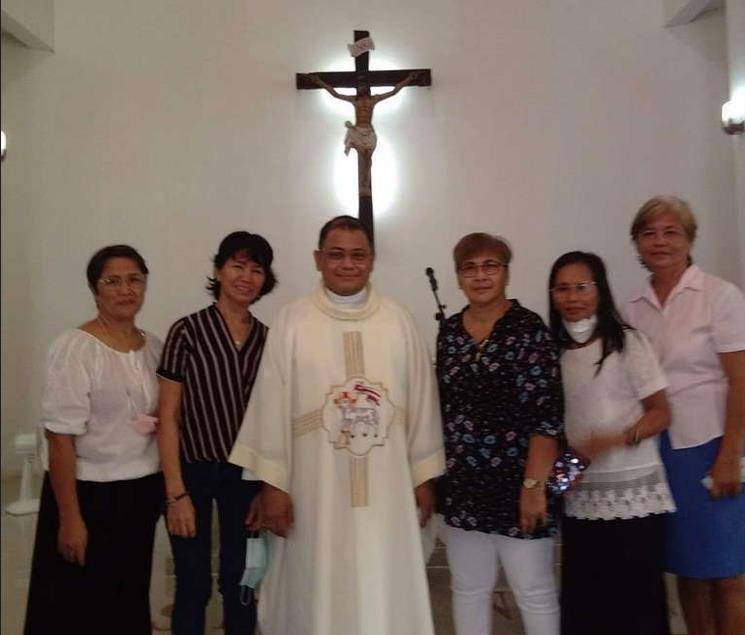
A 47-year-old priest travels on a boat for more or less three hours via a river to celebrate Mass in the remote villages of Jipapad, central Philippines.
Jipapad is a landlocked town in the province of Eastern Samar, more than 500 kilometers southeast of Manila. Its residents use boats to get to the town of Oras, making them more or less six hours via the Oras River.
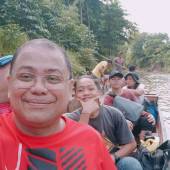
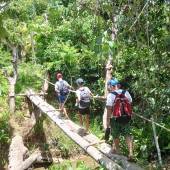
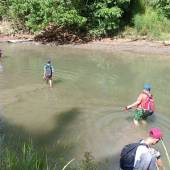
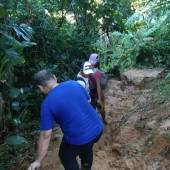
On foot and by boat
Every month, Father Mateo Labrador Suarez, a member of Cannosian Sons of Charity, celebrates a Mass in four villages that usually take him and his companions three hours to reach by engine-driven boat. He's the parish priest of Our Lady of the Most Holy Rosary.
"We have to ride a boat to reach the villages of Agsaman, Magsaysay, Cagmanaba, and San Roque," he said in Filipino.
Traveling to the barangays (villages) of Agsaman and Magsaysay by boat takes about three hours. And visiting the Catholics in the barangays of Cagmanaba and San Roque takes them about an hour and a half.
But the river is not passable to boats at all times. When the water goes down below the knees, the keel would touch the river floor and the boat would not move any further.
"At times, we are forced to get to the villages of Agsaman and Magsaysay by foot when the water is shallow," Suarez said in Filipino.
When the river is shallow, Suarez and his team of sacristans and lectors wade through the water to travel to their destination.
They usually walk their way to the villages of Agsaman and Magsaysay during the month of September, when the river water goes down below their knees. They wade through the water in a file like a small squad of soldiers, several yards apart from one another. Each one of them carries a backpack holding things needed for celebrating mass and personal needs like clothes, water, and food.
The priest and his team usually travel to the remote villages in slippers, short pants, a T-shirt, and a cap for ease and protection from the elements, especially on sunny days.
Getting to the villages of Agsaman and Magsaysay by foot takes longer than by boat due to the rising and falling terrain and the slippery, narrow, and rugged path, especially during rainy days.
"Fortunately, we travel to these villages more often by boat," Suarez said in Filipino.
The priest and his team had so far not encountered any problems while traveling by boat.
"Every one of us can swim," he said.
The chapels that they have to reach by boat are the San Isidro Labrador in barangay Agsaman; the San Jose Manggagawa in barangay Magsaysay; the Nuestra Señora de Salvacion in barangay Cagmanaba; and the San Roque in barangay San Roque.
By foot alone
But traveling to the remote villages of the faithful by foot somehow worries the priest at times.
The long and rugged way to reach these villages is forested and largely uninhabited on the sides.
"We fear snakes," Suarez said. "But by God's mercy, we have not encountered any so far."
"Aside from the four villages that we reach by boat, the parish also has three others that would need us to reach by a long walk," he added.
These villages are the barangays of Dorillo and Recare, and the sitio of Maylemon. And the travel time to get to these places is longer.
"It takes us about four hours of walking," he said. "We need to leave at four or five in the morning to arrive on time for the Mass."
Suarez and his team have to pass through a number of makeshift bridges made of trunks of trees, bamboo, and coconut lumber over irrigation canals and streams.
They also travel on narrow, winding, and slippery paths to reach the isolated communities of the faithful. They use sticks for support when navigating slippery and narrow dirt paths and when scaling up and down slopes.
And from time to time, they stop in the shade of trees to take some rest and rehydrate with the limited water in their small jars and tumblers.
The chapels that are accessible by foot alone are the Christ the King in barangay Dorillo; the San Antonio de Padua in barangay Recare; and the San Isidro Labrador in sitio Maylemon, Barangay 1.
Based on the 2020 census, Dorillo was the smallest barangay in Jipapad in terms of population, with a total of 239 inhabitants only.
Suarez also takes along with him a catechist whenever there are infants to be baptized in the remote villages. The catechist conducts seminars for the parents of the child and the sponsors.
Since the parish church in the town center is not easily accessible for the villagers in the remote areas, Suarez has decided to baptize infants in the community chapels.
Usually accompanying him in his travels to the remote villages by boat and by foot, and by foot alone, are two sacristans and two lectors. The distance and the difficulty of accessing these places had encouraged him to train local lectors. He had started training some of the faithful to become lectors recently.
The priest visits at least two villages on Saturdays to celebrate a mass with the faithful. Every barangay in the parish has a regular monthly mass, he noted.
Jipapad, a small fifth-class municipality, is politically subdivided into 13 barangays. The locals largely speak Waray and Tagalog. As of 2020, the town had a total population of 8,439 based on Philippine Statistics Authority data.
The construction of a hanging bridge crossing the town’s major river was completed in April 2021.
According to April 16, 2021, PNA report, the 80-meter-long steel and concrete hanging bridge, which cost P18 million, connected the town center to the rest of Jipapad.
Suarez expressed joy over his journey as a servant of God in this town.
"I am happy to share with you our experience," he said. "I pray that it will inspire others to serve God."
Suarez hails from Sultan Kudarat, a province in the southern Philippines.
Radio Veritas Asia (RVA), a media platform of the Catholic Church, aims to share Christ. RVA started in 1969 as a continental Catholic radio station to serve Asian countries in their respective local language, thus earning the tag “the Voice of Asian Christianity.” Responding to the emerging context, RVA embraced media platforms to connect with the global Asian audience via its 21 language websites and various social media platforms.











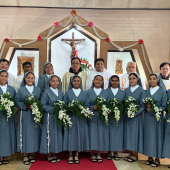



- Reply
Permalink